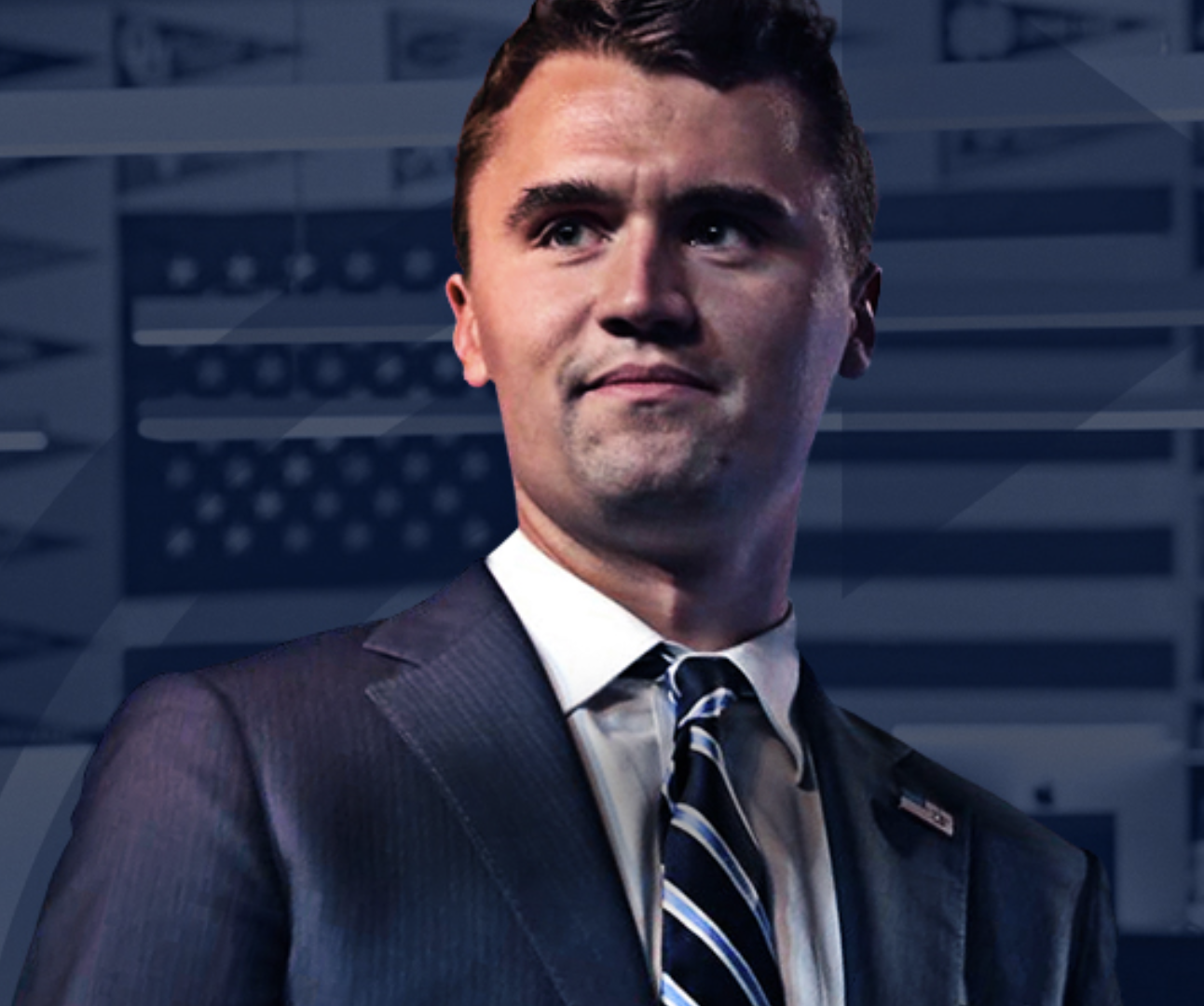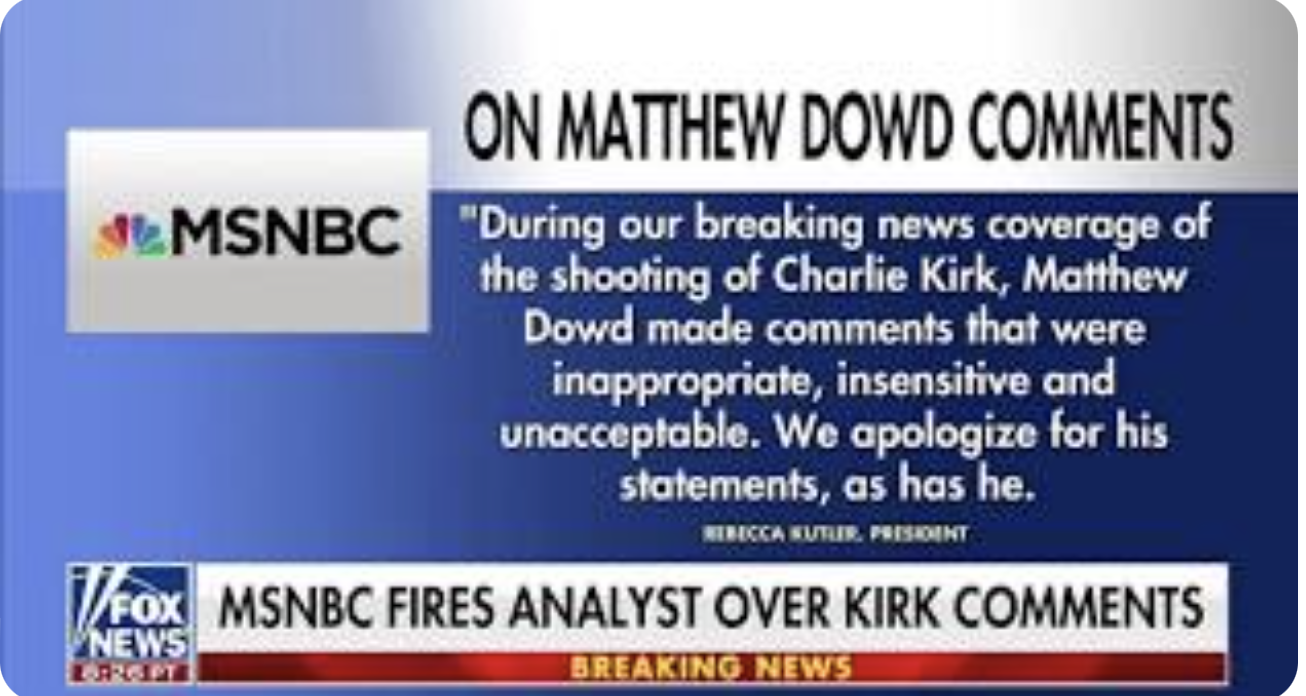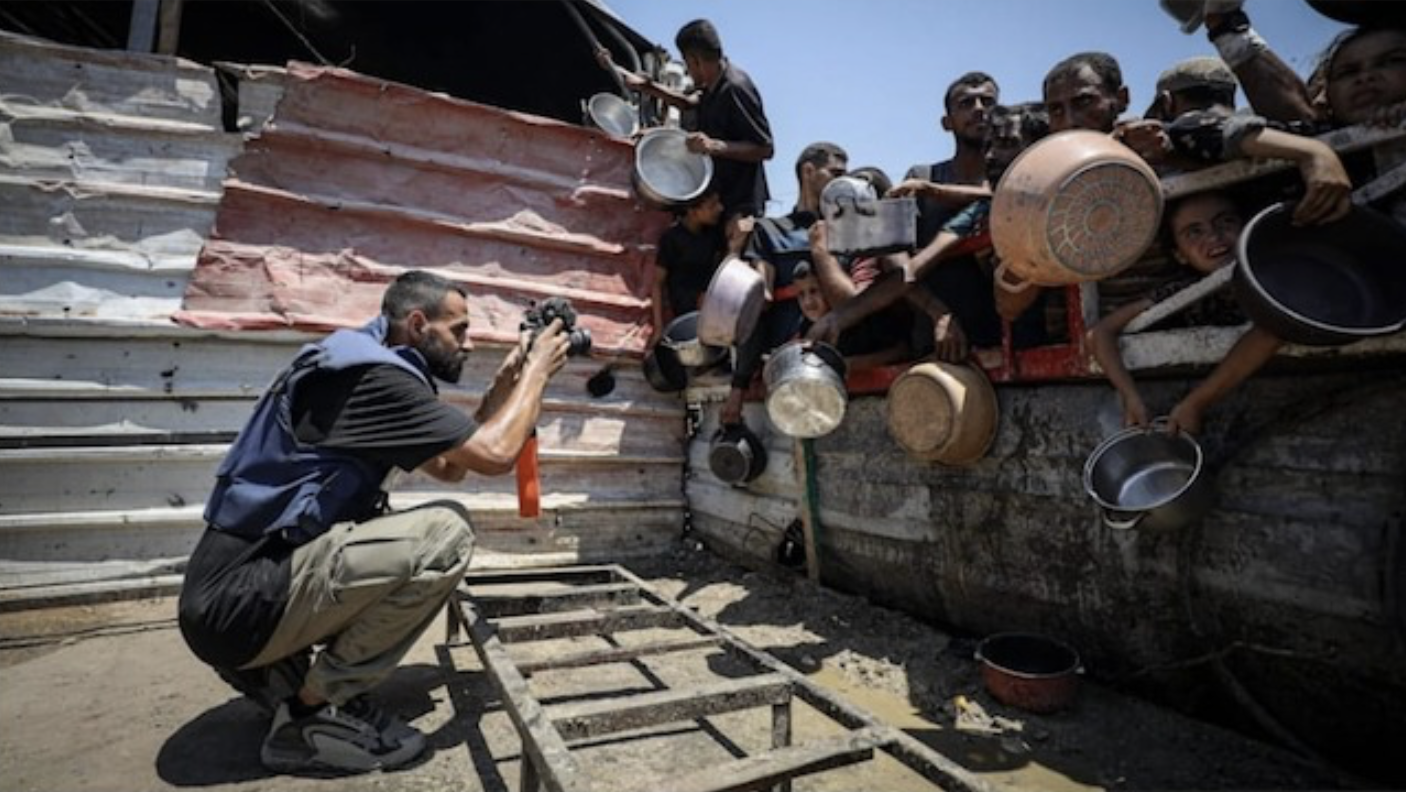Amid grief over Charlie Kirk, two networks play politics
/In the early moments after Charlie Kirk’s death, MSNBC commentator Matthew Dowd cautioned against premature conclusions by suggesting the shooting could have been a supporter’s gun going off in celebration.
That was a stupid remark. But it’s not what got him fired.
Here’s what did: Asked by the show’s host to discuss the political environment that could lead to such violence, Dowd called Kirk “divisive” and said: “…Hateful thoughts lead to hateful words, which then lead to hateful actions. And I think that is the environment we are in. You can’t stop with these sort of awful thoughts you have and then saying these awful words and not expect awful actions to take place.”
Some right-wing media, such as The Daily Caller, interpreted that as “Charlie Kirk deserved to die.” That sentiment is a fireable offense, but that’s not what I took from those words. It’s also a fireable offense to suggest that assassination would be a rational response by an angry but otherwise rational person to Kirk’s politics. But that wasn’t the takeaway, either. I read Dowd’s words as saying that hatred spewed toward political opponents or selected demographic groups increases the likelihood that a crazy person would wrongly decide violence is justified, and I don’t see any inaccuracies there. Dowd may have been talking only about the potential reaction to views as extremely rightward as Kirk’s, but I think it applies on both ends of the ideological spectrum.
Yes, it’s hard to argue for my interpretation when both MSNBC and Dowd himself publicly apologized. But I suspect MSNBC, whose president called the comments “inappropriate, insensitive and unacceptable,” didn’t want to open itself up to charges of coldheartedness (or worse) while so many people were deep in grief. Or to accusations that the network helped to create the climate in which such a tragedy could occur. (Dowd on Friday ripped the network for caving in to a “right-wing media mob.”)
Meanwhile, over in the detestable Fox News opinion division, primetime talk show host Jesse Watters recklessly fired off cannons. “They are at war with us!” he declared before Kirk’s killer was even known. The “us vs. them” narrative is the go-to move for many right-wing talking heads, although they rarely bother to say who “they” is. Apparently all the political progressives in the U.S. got together in Bryant-Denny Stadium and voted to begin executing political enemies.
Certainly, strident liberal voices in the news media have labeled MAGA leaders as fascist and dangerous and have dialed up the thermostat. But the fear-generating language emanating from Fox opinion programs about “leftist radicals” is more routine, more alarming and has less basis in reality. And you know management is all on board*.
Neither Fox News nor MSNBC alone is going radicalize a viewer to the point of murder. It takes dark corners of social media and fringe, extremist publications, too. But hostility on TV isn’t good for the deteriorating civic conversation in the country today.
*On Wednesday, Fox News host Brian Kilmeade suggested fixing the problem of homeless people by “involuntary lethal injection.” Earlier today, four days later, he publicly apologized. He still has his job.


















